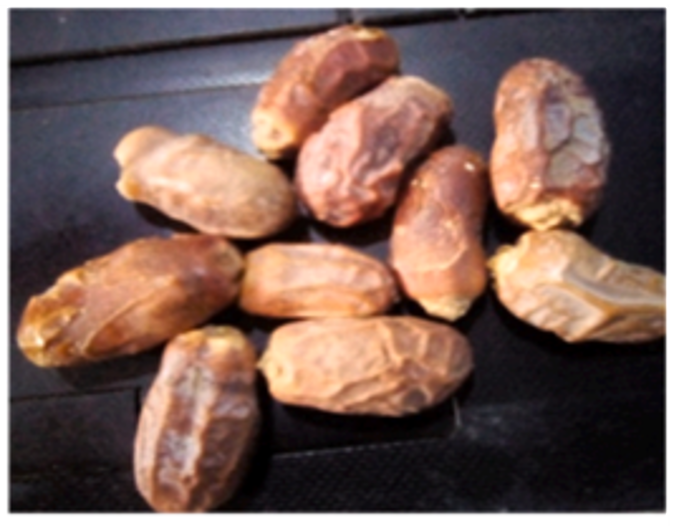Extracting juice from dates (Phoenix dactylifera L.) using response surface methodology: Effect on pH, vitamin c, titratable acidity, free amino nitrogen (FAN) and polyphenols (2023)

Abstract
The aim of this text is to investigate the effects of temperature, time, volume/mass ratio, and enzyme volume on various properties of date juice extracted from the "Bournow" cultivar, and to optimize the extraction process to maximize the levels of free amino acids, total polyphenols, vitamin C, and pH. The extraction technique was used to obtain date juice for use in the beverage industry from the "Bournow" cultivar. The effects of temperature, time, volume/mass ratio, and enzyme volume on free amino acid, total polyphenols, vitamin C, and pH levels were then investigated using a design centered on four parameters. All multivariate polynomial models of second degree with interactions were discovered and validated. To optimize responses, multiresponse optimization was utilized. The center composite design (CCD) determined the following response ranges: 4.21 to 5.62 pH; 45 to 126.66 mg/L vitamin C; 2.7 to 6.87 g GA/100 g total polyphenols; and 429.94 to 615.55 mg/L free amino acids. The selected factors had varying effects on the pH, vitamin C, total polyphenols, and free amino acid responses, with simple, quadratic, and interaction contributions leading to significant increases or decreases. Multi-response optimization, the objective of which was to maximize all responses besides pH in order to produce an abundant juice, resulted in the following compromise: 95 C temperature; 10 min duration; 2:1 water/pulp ratio; and 0.5 ml of pectinase. The optimal values simulated yielded the following respective maxima: pH is 4.13; vitamin C is 116.5 mg/L; total polyphenols are 6.25 g GA/100 g; and free amino acids are 587.88 mg/L. This study successfully optimized the extraction technique for obtaining date juice from the "Bournow" cultivar. The results provide valuable insights for the beverage industry. Future prospects include further research on the sensory properties and shelf life of date juice, as well as exploring its potential applications in other food and beverage products.


